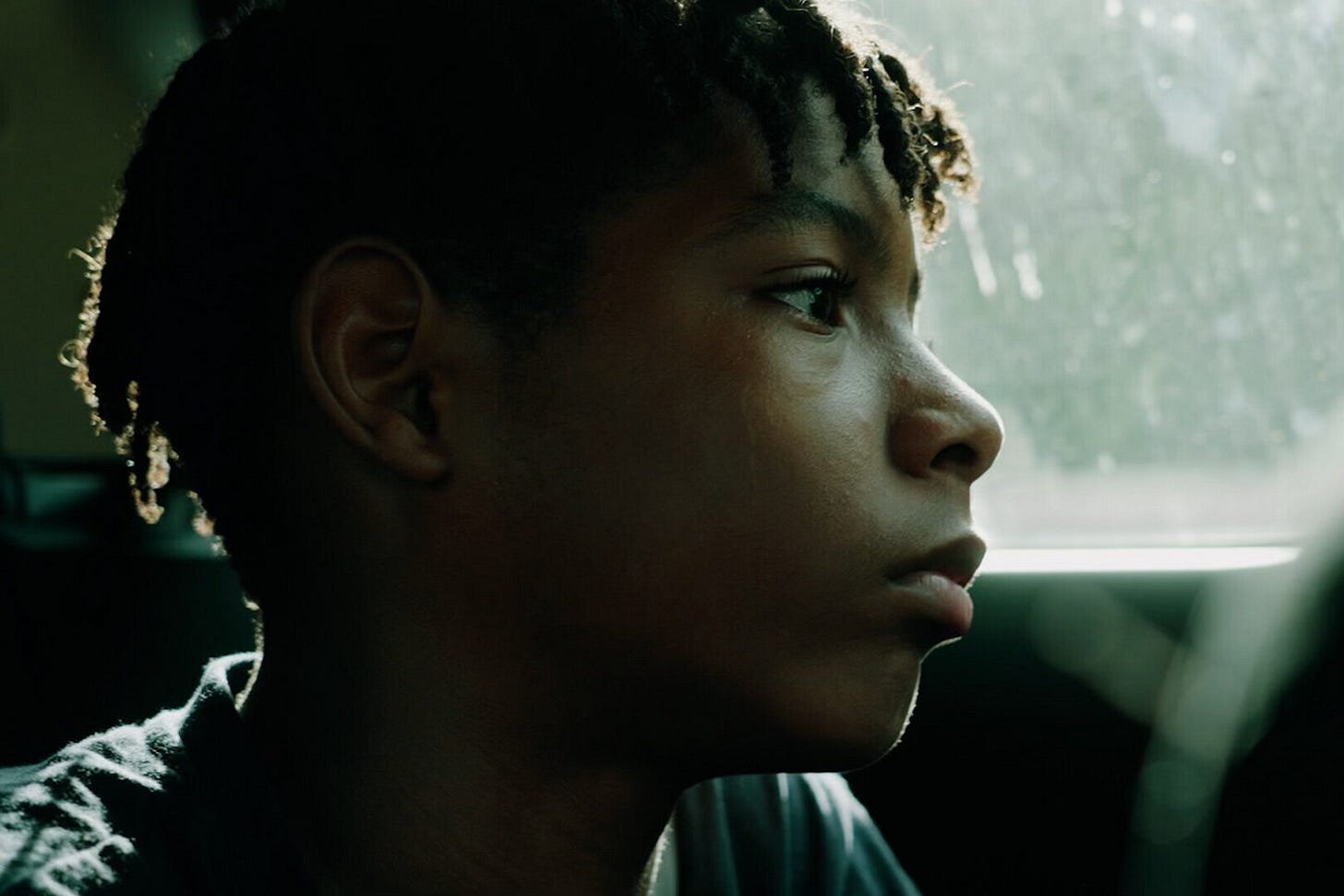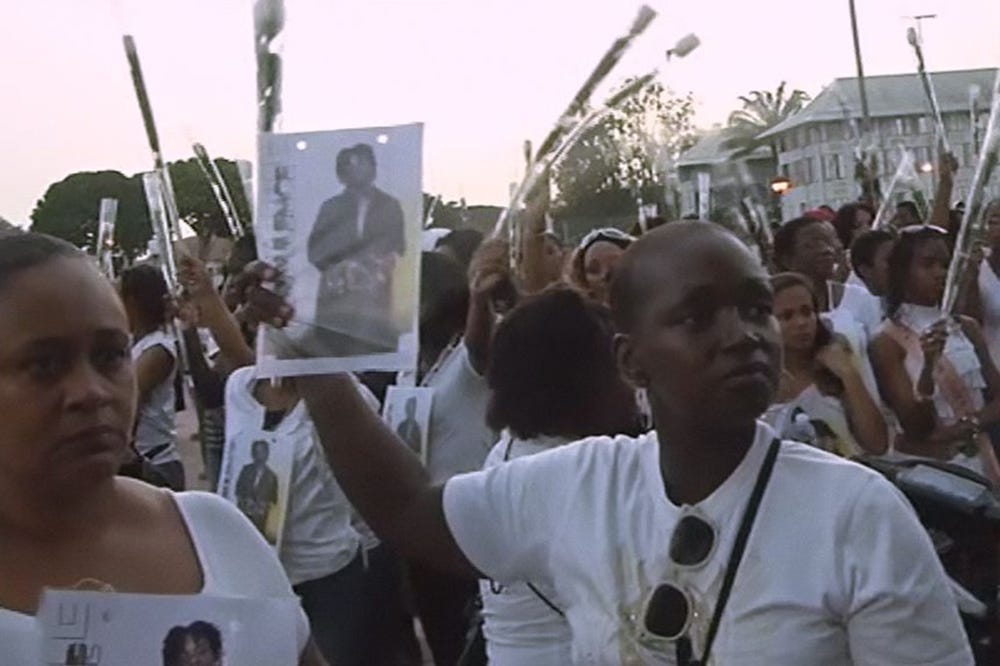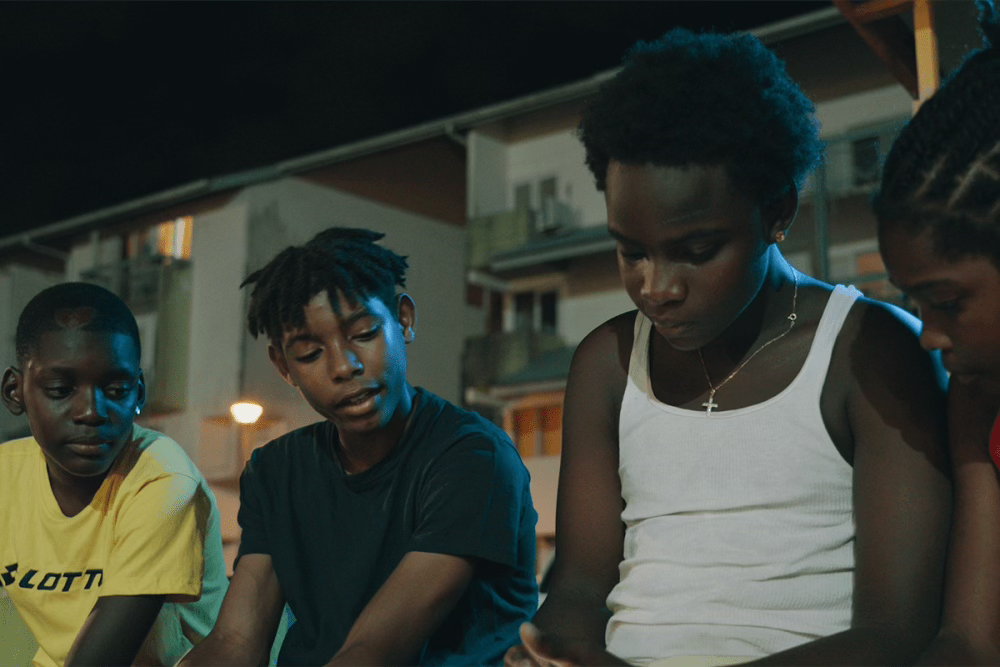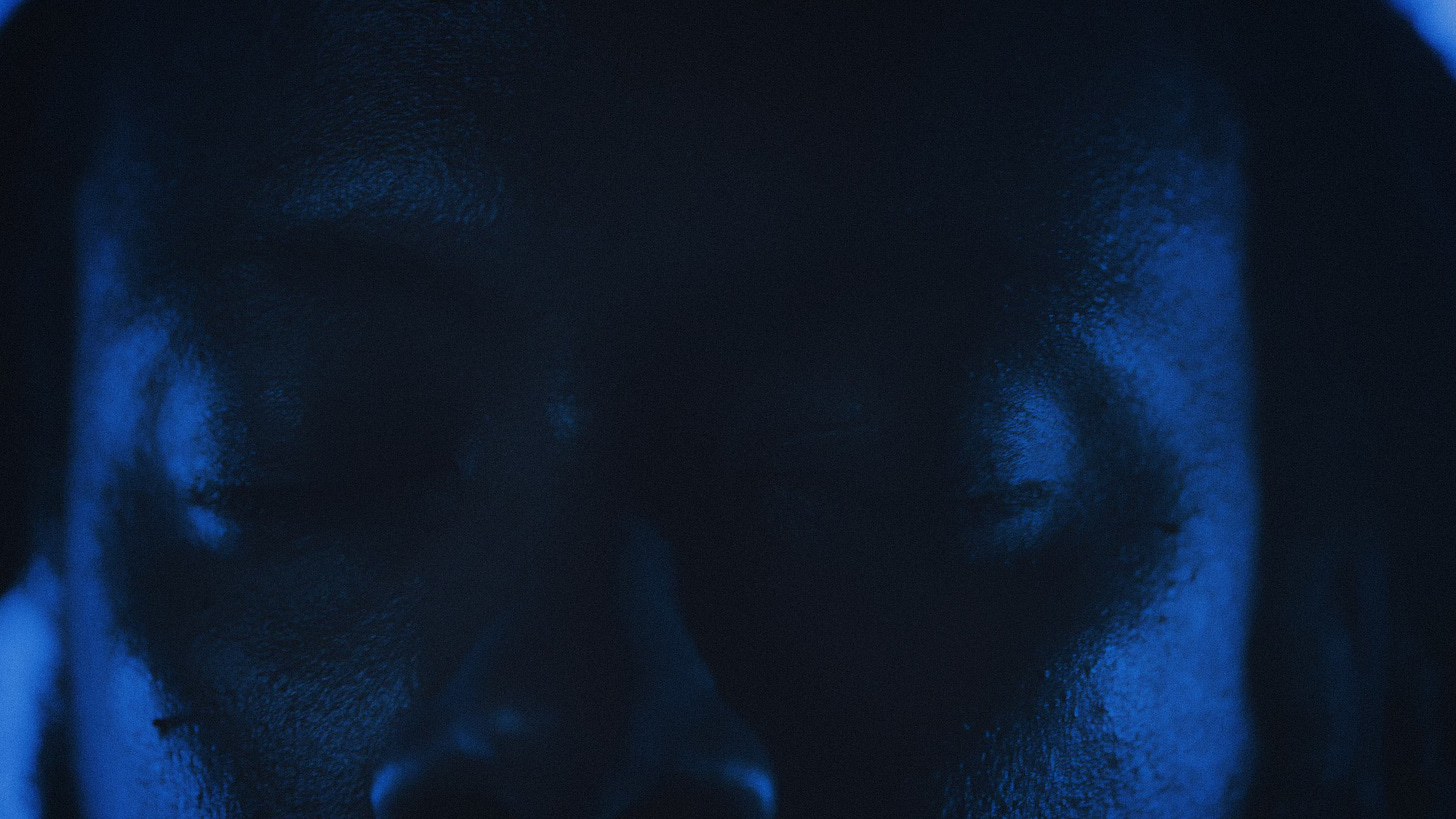15: Listen to the Voices
On Maxime Jean-Baptiste's Listen to the Voices (2024), and on the continual construction of realities
“I’ll never have another best friend.”
Not every new film needs to do something novel. Sometimes it is perfectly fine for a film to just do well what it sets out to do. Listen to the Voices (2024), the debut feature from Maxime Jean-Baptiste, is one such work. Little about the film is particularly innovative, borrowing as it does stylistically from a type of hybrid documentary that dominated the non-fiction festival landscape of the 2010s but has since fallen somewhat out of fashion. The form of Listen to the Voices is familiar. Many of the techniques used in the film have been seen before. And yet, Jean-Baptiste’s film is so well crafted, so confidently made, and ultimately, so deeply moving, that this doesn’t matter. Sometimes it is more than enough to do the simple things well, apply some flourishes where appropriate, and just make a good and meaningful film—especially when the subject matter is so personal and the perspectives are underrepresented.
Listen to the Voices is a film about grief, trauma, and violence that simultaneously serves as a modest portrait of people and place. It is a film that is in turn calm and angry, divergent and direct, quiet and loud, and also one that teases out its subject matter and background slowly, concealing information initially before beginning a process of gradual and surreptitious reveal that supplements and expands the words that had been heard and the images that were seen before it. The setting is French Guiana, no longer officially a colony but, since 1946, an “overseas department” of France instead. The focus is on Melrick, a thirteen-year-old boy who lives in Paris but is spending the summer in Cayenne with his grandmother Nicole, with whom he is very close. The through line, or the event that gives an episodic film its linearity and forward momentum, is a concert in which Melrick will make his debut in a marching band as a drummer. And the crucial background detail that colours everything is a murder that has taken place years before the events being depicted. In 2012, Lucas, Melrick’s uncle, was killed, aged eighteen, in gang-related violence, and Listen to the Voices explores the reverberations and ramifications, continuous and unresolvable, that stem from this single rupturing act of violence. The extra piece of context, something that the film does not disclose but that can arguably be observed from the intensity of the film’s intimacy and the overall familiarity of the relationships seen on-screen, is that Jean-Baptiste has a direct connection to these people, this place, and this incident: Nicole is his aunt and Lucas was his cousin.
Two opening sequences set the stage and establish much of this context, albeit in a manner that is only apparent later on. (The details of Lucas’ murder are only expounded in full via news footage that arrives 35 minutes into a 77-minute-long feature.) After a montage of archival material showing a carnival held in Lucas’ memory, presented without any captioning telling the viewer exactly what they are seeing or what relevance it has to the story that will follow, we are introduced to Melrick. We see a teary woman, hear snippets of speeches, follow sections of a march, and then view a procession of figures holding flowers in plastic packeted sleeves, before a cut to black is employed and trailed by a title card. After, in one of the many roaming steadicam long takes that are consistently elegantly employed in the film, we see Melrick, alone on a country road, walking and beating a white plastic drum with his right hand, learning new techniques from a YouTube video played on a phone held in his left one. Some kind of connection is established between these two disparate sequences, one presented in the blocky distortion of low-resolution archival video that signals a not-so-distant-then and the other in the crisp high-definition of the digital-now. In this opening scene Melrick marches only for himself, but by the film’s end he will be playing in a parade held in his uncle’s memory, channelling individual grief for someone he never knew and indignation over something he cannot yet process into an event intended to hold a collective outpouring so that such feelings are shared.
The film continues in linking past and present by dipping between occasional archival material and conversations happening in the present. In the sense that these new scenes are written and the direction of the dialogue is planned, Listen to the Voices is a fiction film. But the substance of it is real, and the characters are playing versions of themselves, created on their own terms in collaboration with the filmmaker. Jean-Baptiste has referenced Roberto Minervini—a filmmaker who emblematised this approach and aesthetic with films like The Other Side (2015) and What You Gonna Do When The World Is On Fire? (2018)—citing him specifically and regularly as an influence in interviews. One key difference between Minervini’s approach and Jean-Baptiste’s is of course the proximity of the filmmaker to his subject. Minervini embeds himself, fearlessly or callously depending on your propensity towards his controversial method, within communities in order to co-create cinematic situations based around their lived experience in a practice sometimes referred to as “constructed reality;” Jean-Baptiste works here with his own family members to address a situation he has been deeply personally affected by. The dangers involved in making Listen to the Voices are greater. Minervini risks exploiting semi-strangers, but in making his immediate family retread the traumas of their past Jean-Baptiste jeopardises the people closest to him, possibly retraumatizing them by reawakening ghosts laid to rest a decade prior. On this, Jean-Baptiste has claimed that the process of hybridisation helped rather than hindered: “Fiction actually created a distance that made it easier—for me, but also for the protagonists—to tell their stories.”
The appeal of the hybrid method is obvious—for both non-fiction filmmakers and audiences. It becomes possible to deal directly with the real while simultaneously beautifying it, creating a version of the desired actuality that is not always possible with direct observation, controlling the events that unfold and also allowing production conditions that permit a cinematographic approach that may not be achievable with the randomness of unmediated instantaneous capture. Elaborate long takes can be pre-planned; conversations can be improvised, and then reworked and refined so that they become the most succinct and poetic expression of the intended sentiment. And as a result, some viewers, upon learning that what they are watching is, in the strictest sense, “fake,” can feel deceived—hybridity can sometimes feel a little like cheating. Here, however, because of the filmmaker’s closeness to the characters and to the subject matter, this is not the case. Despite its identifiable construction, the film feels fundamentally authentic. Beyond the fact that those who are seen in Listen to the Voices are members of the filmmaker’s family, interviews with Jean-Baptiste suggest that this is because the film was workshopped with its participants, meaning that the film is a carefully considered collaboration between people with an existing connection who have been granted real creative autonomy, rather than a filmmaker engaging protagonists in order to generate a cinematic outcome. “I asked them: How do you want to see yourself represented,” says Jean-Baptiste. “We took a lot of scenes out because they didn’t fit with their ideas; it was a collaborative process.”
Beyond this authenticity, Listen to the Voices is also effective due the simple fact that it contains many very affecting scenes. Some moments are moving in an indirect way, such as a number of long takes tracking Melrick as he rides through town on his bike, friends and interlopers passing by, shouting things at him or popping wheelies in the background, or the few brief moments featuring street football that allow for some particularly dynamic camerawork from cinematographer Arthur Lauters. Others are more directly emotional, such as a late film sequence in which Nicole talks to Melrick directly about the death of his uncle. The scene gives the film its emotional backbone, even if it is the moment in which the seams of the filmic reality’s stitching become most visible. Talking to him like an adult, Nicole tells Melrick a story in which she nearly lost her temper after unwittingly meeting one of Lucas’ murderers in a petrol station. One of the film’s biggest questions is whether it is possible to forgive someone who has wronged you so greatly, and while her story is supposed to be revealing in this aspect, Melrick’s reaction does not suggest he shares her conviction. While something about the scene is soap-opera-ish in nature, it is certainly powerful, indicative of the film’s ability to subtly pull at the heartstrings. Maybe most moving of all is the material surrounding Yannick, Lucas’ best friend and someone who was there at the moment he was murdered. “Even if it was ten years ago, it seems like yesterday,” Yannick says in one scene where, upon seeing a mural made for Lucas unveiled in the housing district where they had both lived, he breaks down into tears. As an outburst of uncontrollable emotion emerging from a planned situation, something about this scene seems to cross the thresholds of hybridity, showing that nothing in a film so personal can really be considered a performance even if the scenario might be pre-considered or the direction of the conversation orchestrated.
Several interludes—one of which provides the film with a non-conclusive feeling sort of ending—ignore questions of hybridity altogether and take the film out of an identifiable reality by drifting into something more reminiscent of a dream logic. All shot in an aquamarine blue night light that looks almost like the hue used in Hype Williams’ Belly (1998), these sequences feature a group of men, Yannick among them, speeding on motorbikes in slow-motion. Set to the liltingly ethereal tones of the Floating Points, Pharoah Sanders, and the London Symphony Orchestra collaborative project, the combination of symphonic music and hyper-glossy imagery should feel overwrought, but, due perhaps to the rest of the film’s relative restraint, it seems a worthwhile tonal departure, cathartic in its drift towards the interstitial space between dreams and nightmares. As a conclusion, despite feeling familiar, it is successful because it is compelling and confident. Men on motorcycles are being swallowed by an all-encompassing blue darkness. A filmmaker in charge of the elements is taking you somewhere. Maxime Jean-Baptiste is assured in his vision.
Listen to the Voices (Maxime Jean-Baptiste, 2024) had its premiere at the Locarno Film Festival in 2024, and has since screened at many festivals, including International Film Festival Rotterdam, RIDM, and the Viennale. More information about Maxime Jean-Baptiste can be found here. To receive more articles like this, please subscribe. The writing in this newsletter will always be free-to-read, but donations are very welcome.




